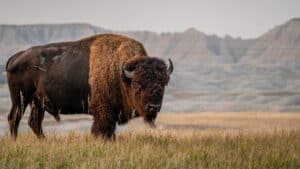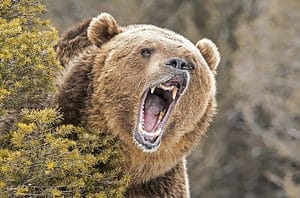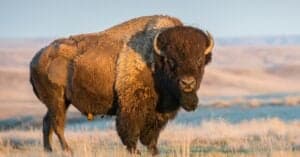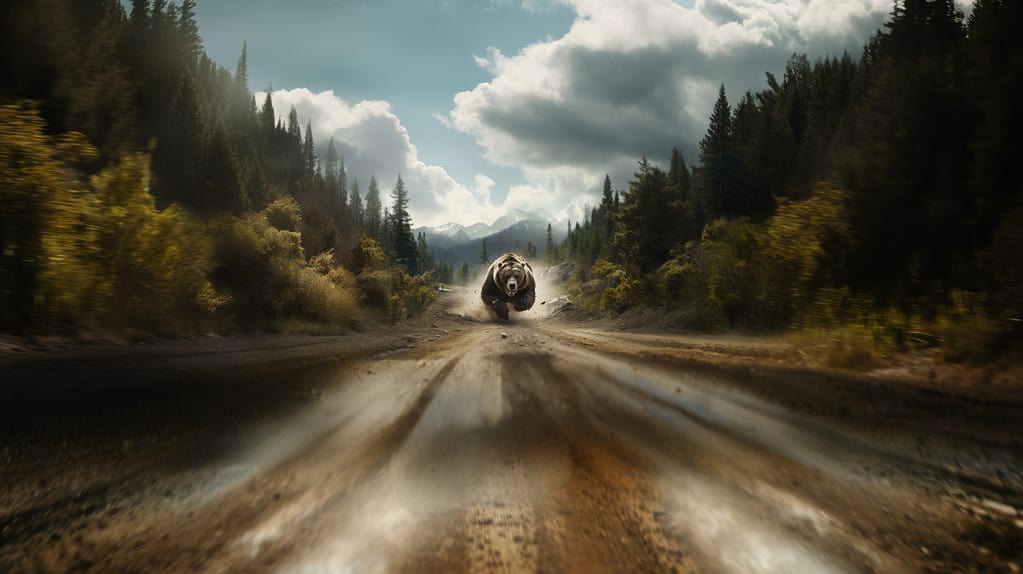
Discover Yellowstone National Park’s most dangerous animals that cause human injuries and fatalities.
©A-Z-Animals.com/N/A
What Is the Most Dangerous Animal in Yellowstone National Park?
While many visitors to Yellowstone might assume that the grizzly bear or gray wolf is the most dangerous animal in the park, they would be wrong. Rather, the most dangerous animal in Yellowstone is the bison. There are several reasons why bison pose a greater threat to tourists in the park than grizzlies or wolves. For one, humans encounter bison more frequently than they do grizzly bears or wolves in Yellowstone.
In addition, tourists encounter bison in close proximity. Bison in Yellowstone may graze close to roadways, cross roadways, or stumble into campgrounds, roaming near human activity. Yellowstone rangers do not require tourists to stand more than 25 yards from a bison. Conversely, rangers encourage visitors to keep at least 100 yards of distance between themselves and a grizzly bear or wolf. Therefore, visitors have a higher chance of suffering injuries from bison due to proximity to them.

Yellowstone National Park’s most dangerous animal is the bison.
©Tiffany Noel Videography/Shutterstock.com
What Features Make Bison Dangerous Animals?
The bison’s size alone makes it a formidable and dangerous creature. An adult male bison may stand over 6 feet tall and weigh up to 2,200 pounds. In addition, bison often appear calm, but they can act aggressively toward humans. Buffalo may run at speeds up to 35 miles per hour. When charging humans, bison use their massive horns to gore their target. These horns may attain a length of 2 feet.
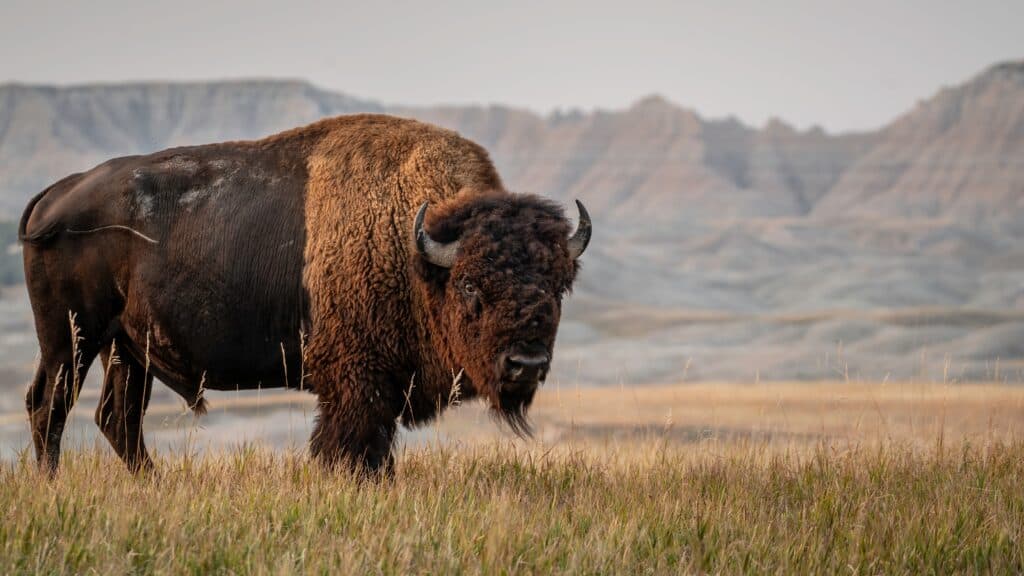
Bison may exceed 2,000 pounds, making them massive and formidable creatures.
©Tim Malek/Shutterstock.com
Injuries and Fatalities from Bison in Yellowstone
In the United States, around 1.7 people are injured every year due to a bison attack. On the other hand, only 0.7 people suffer injuries from a wolf attack annually, and 0.8 people are injured by grizzly bears every year.
Between 1978 and 1992, nearly four visitors to Yellowstone National Park were injured by bison each year, and 0.1 people per year passed away due to injuries. This statistic translates to 56 injuries and two deaths within 14 years. However, the frequency of non-fatal injuries due to bison attacks in Yellowstone decreased between 2000 and 2015. During these 15 years, 1.7 people experienced non-fatal injuries per year with a total of 25 injuries.
Grizzly bears recorded the same rate of non-fatal injuries between 1900 and 1980 as bison did between 1978 and 1992 at 3.7 people injured per year. More so, grizzly bears caused more non-fatal injuries between 2004 and 2015 than bison did between 2000 and 2015, with 2.2 persons injured each year. Grizzly bears also recorded a higher rate of fatalities than bison across any year. While some may argue that these statistics signify that grizzly bears are more dangerous than bison, we must observe the context of these statistics.
Grizzly bear non-fatal injury and fatality statistics were recorded across the entirety of North America. On the other hand, bison injury and fatality statistics were recorded in Yellowstone National Park alone. Therefore, grizzly bears may be more dangerous than bison across the continent, but they are not more dangerous than bison within Yellowstone.

Between 2000 and 2015, 25 people were injured due to bison attacks in Yellowstone.
©Grey Mountain Photo/Shutterstock.com
Why Are Bison Attacks Common in Yellowstone?
Many people who visit Yellowstone are unfamiliar with bison and do not know how to observe them from a safe distance. While Yellowstone rangers clearly outline safe approaches to observing bison, many tourists disregard these precautions. In addition, the calm demeanor of the bison causes visitors to believe that these massive creatures are kind and approachable. However, this is incorrect.
Bison are highly dangerous creatures that may gore or charge at visitors who approach them. Many tourists do not realize this and choose to approach bison, resulting in irreversible injuries and even death. Bison attacks occur most frequently during mating season between June and July. Therefore, tourists should be extra wary of bison during this time.
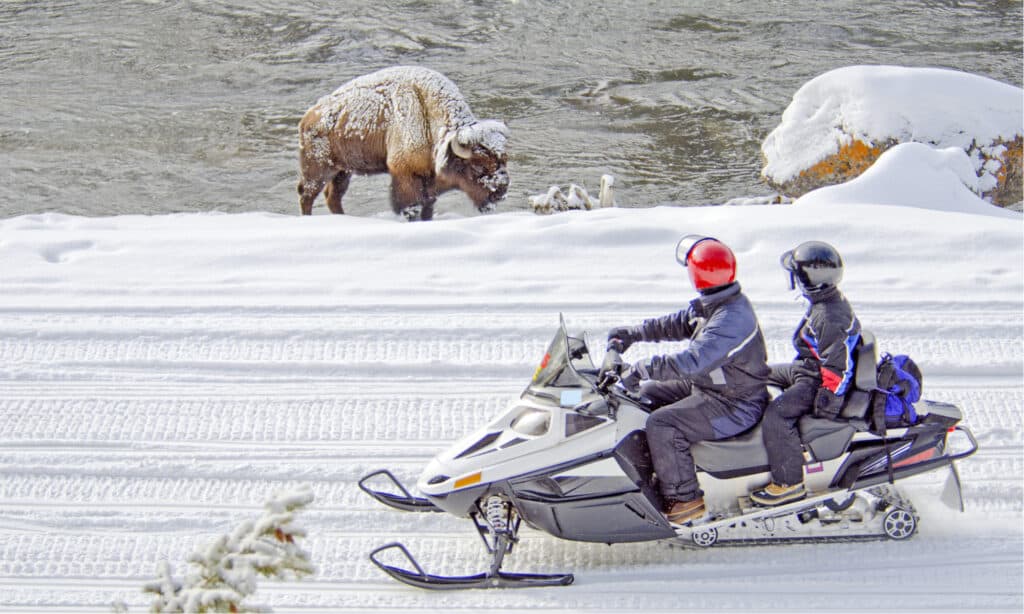
Bison attacks occur when visitors do not keep a safe distance between themselves and wildlife.
©Carolina K. Smith MD/Shutterstock.com
How Did Bison Come to Yellowstone?
Before European settlement in the Americas, tens of millions of bison lived in North America, often hunted by Native Americans for culinary, medicinal, and household uses. However, Europeans eventually made their way into the American West by the 1800s. As Europeans settled in the West, they looked for more land to claim as their own.
Desiring to push Native Americans from their land to expand U.S. territory, Europeans eradicated many bison throughout the West, destroying a primary food source for natives. In addition, hunters killed bison for their desirable hide and let the remainder of the bison’s body waste away. These hunting techniques left bison populations particularly vulnerable in America, resulting in few remaining wild bison by the 1880s.
In 1902, managers of Yellowstone National Park determined to save the remaining bison and establish a new, protected population within park boundaries. Lamar Buffalo Ranch served as the home of 21 bison, which gradually moved into the park. Although conserving and increasing bison populations was a long and difficult process, it proved successful with over 1,300 bison individuals recorded within Yellowstone by 1954.
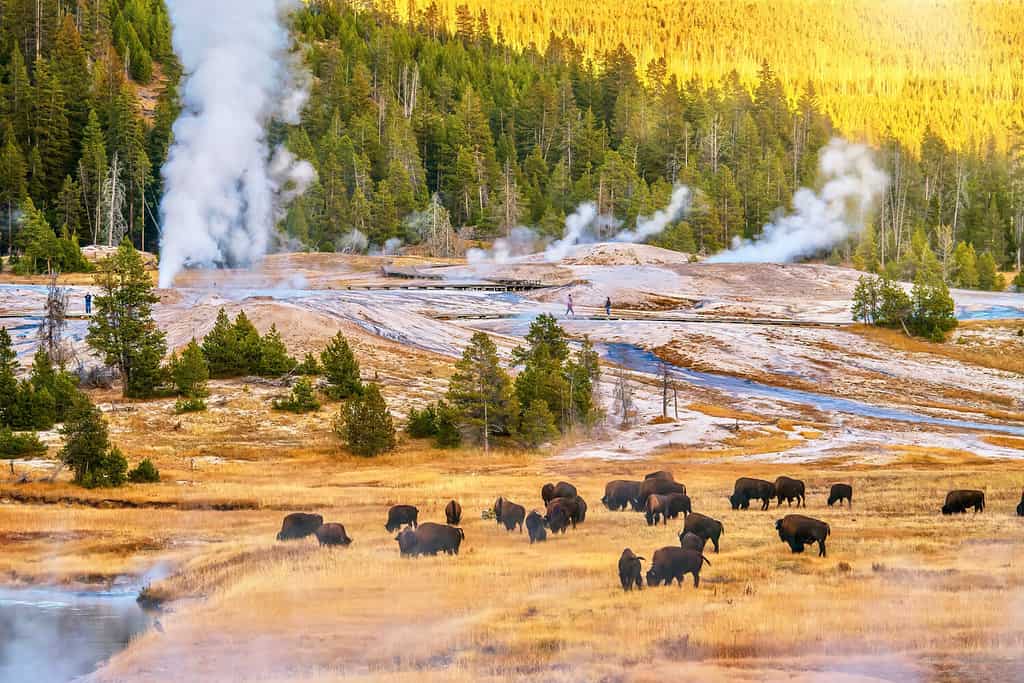
Conservation practices enforced by Lamar Buffalo Ranch helped increase bison populations.
©CherylRamalho/Shutterstock.com
Examples of Other Dangerous Animals in Yellowstone
Other dangerous animals in Yellowstone include grizzly bears, coyotes, wolves, elk, and moose. However, injuries and fatalities from these mammals are rare, especially within Yellowstone National Park. Typically, these attacks do not occur unless a human has provoked the animal. Another cause of moose-related injury is due to vehicle-related incidents, during which a vehicle hits these large animals crossing the road.
Grizzly bear attacks, though, result in more serious injuries than attacks from wolves, moose, elk, and coyotes. Some grizzly bear attacks are defensive, usually occurring when a mother wants to protect her cubs from humans. However, grizzly bears may also choose to attack humans without provocation. Therefore, visitors of Yellowstone should remain cautious in bear country, and always keep bear spray with them.
According to the National Park Service, grizzly bears in Yellowstone have injured 44 people since 1979. Since 1872, grizzly bears have killed eight people in the park. By comparison, bison injured 56 people between 1978 and 1992 alone. While the chances of being injured by a grizzly bear in Yellowstone are lower than the chances of being injured by a bison, visitors should still take necessary precautions to avoid a grizzly bear confrontation.
The chances of a grizzly bear attack increase as the distance from public areas increases. For example, the risk of a grizzly bear attack in developed areas, roadways, and boardwalks measures one in every 59.5 million visits to Yellowstone. On the other hand, the risk of a grizzly bear attack while hiking in the backcountry measures one in every 232,613 travel days. Therefore, hiking or camping away from people increases the likelihood of a grizzly bear attack.
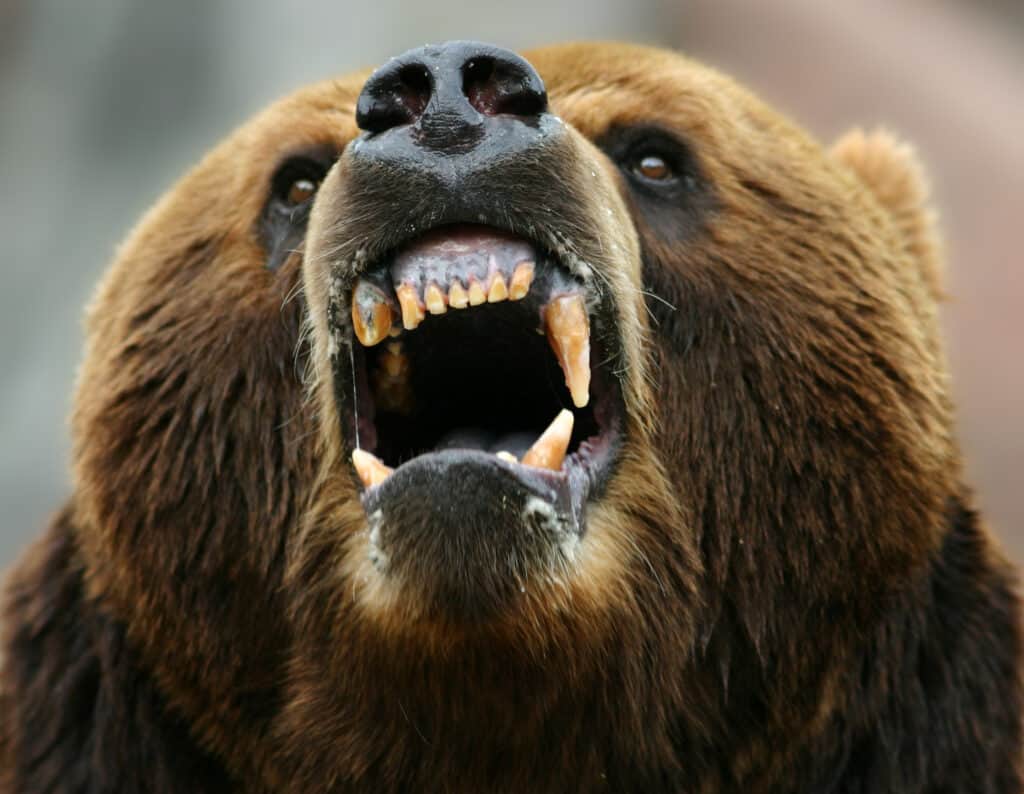
Since 1872, eight park visitors have died due to grizzly bear attacks in Yellowstone.
©PhotoBarmaley/Shutterstock.com
The photo featured at the top of this post is © KenRinger/iStock via Getty Images
Thank you for reading! Have some feedback for us? Contact the AZ Animals editorial team.




